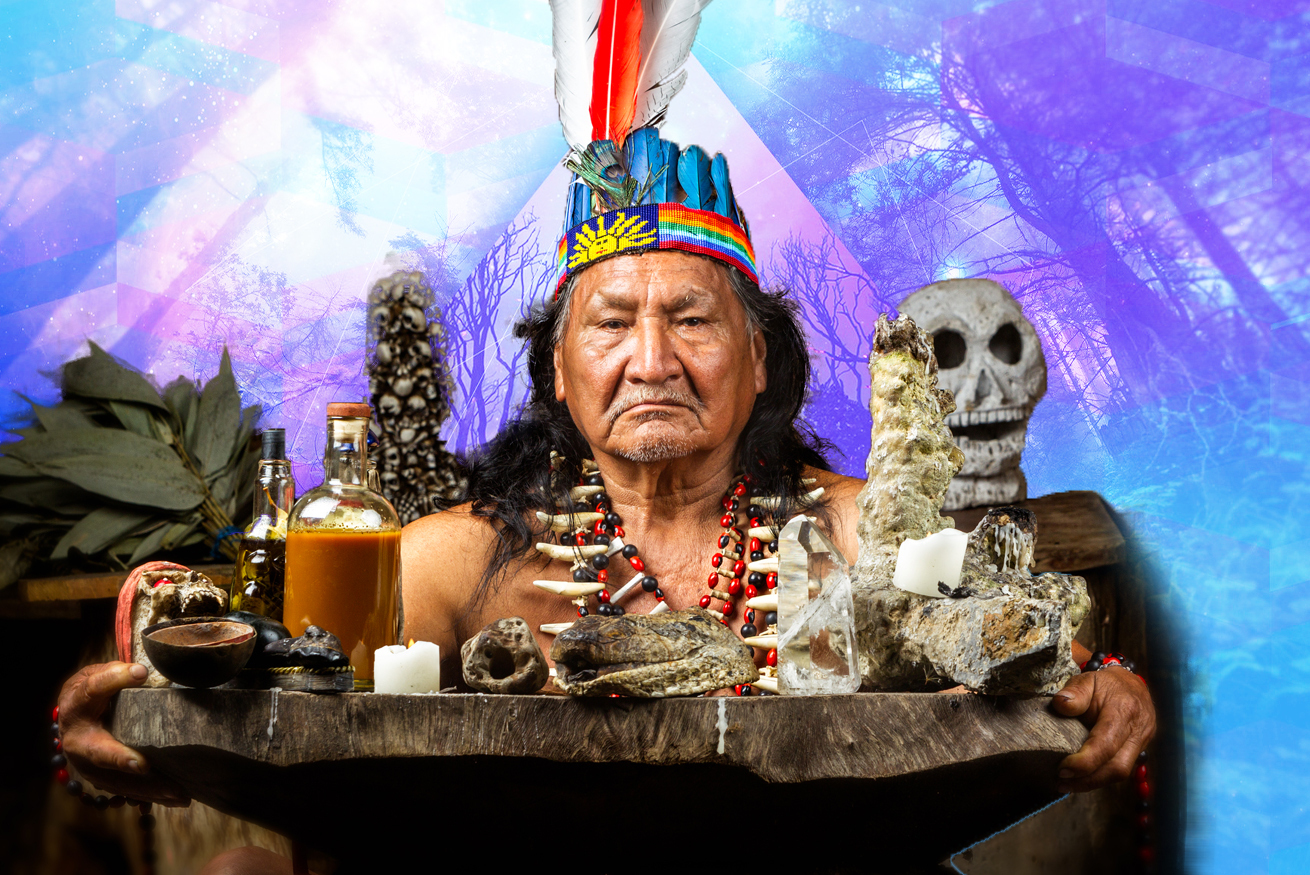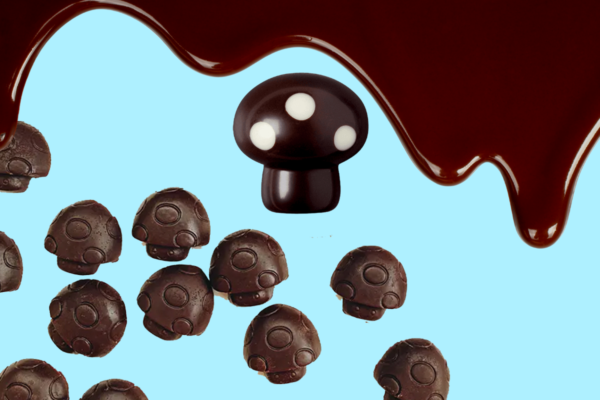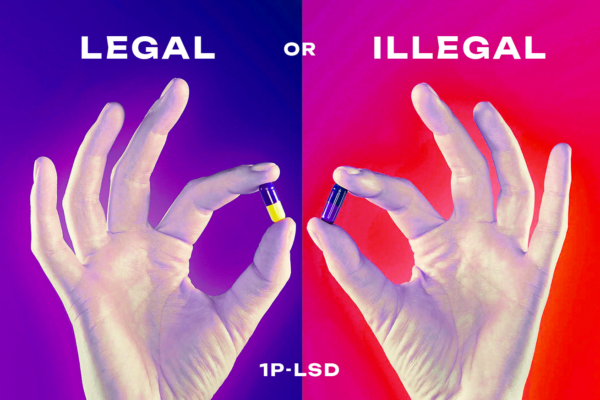
In recent years, research into the therapeutic potential of ayahuasca has become more commonplace in Western society. However, ingestion of this psychedelic brew should not be taken lightly, and adequate preparation and education is essential to understand the implications of this experience and to honor and learn from the rich history of its cultural roots.
The many names of ayahuasca
The Amazonian psychedelic brew prepared by boiling the stems of the Banisteriopsis caapi vine with the leaves of the Psychotria viridis or Diplopterys cabrerana plant goes by many names, including ayahuasca in Peru, yagé in Colombia and Ecuador, and caapi in Brazil, among others. Renowned anthropologist Luis Eduardo Luna recorded over 70 different indigenous names for these preparations, emphasizing its rich cultural history. The most commonly known word to describe this brew, ayahuasca, translates to vine of the soul, and is derived from the Quechua-language roots, aya, meaning death, dead person, spirit, soul, or ancestor, and huasca, meaning rope or vine. Anthropological reports estimate ayahuasca has been used by indigenous communities for over 5,000 years, with direct evidence dating back at least 1,000 years. To many who participate in ayahuasca ceremonies, ayahuasca is considered to be an entheogenic and inspirited plant being with animacy and agency, as a being with its own spirit and social relations. Within the same vein, the world is considered to be inhabited by anthropomorphic spirits within many cultures, and these cultures believe ayahuasca facilitates communication with these spirits. Today, it is a traditional medicine to approximately one hundred indigenous groups across the Amazon Basin, including those dispersed in Colombia, Ecuador, Peru, Bolivia, Brazil, and Venezuela. Ayahuasca has remained a central part of indigenous culture and used in medicine, religious ceremonies and rites of passage.
For more information, visit: DMT vs. Ayahuasca: How Do They Actually Differ?
Mechanisms of action on the human body
The consumption of ayahuasca is associated with a variety of subjective effects, including visual hallucinations, altered sensory perception, mystical experiences, and euphoria. Ingestion of ayahuasca may also give rise to experiences of purging, both physically (e.g., vomiting, diarrhea) and emotionally (e.g., therapeutic release of emotions). Although different indigenous groups have developed complex variations of ayahuasca to modify or potentiate the effects of ayahuasca, infusing up to 90 different plants into the brew, the most commonly used variations combine the roots of the B. caapi with the leaves of P. viridis or D. cabrerana.
Leaves of P. viridis or D. cabrerana contain the psychoactive compound N,N-dimethyltryptamine (DMT), a commonly found alkaloid present in over fifty other plant species that can induce brief but intense psychoactive effects, including visual hallucinations. DMT acts on specific serotonin receptors in the brain, 5-HT-2A, as well as sigma-1 receptor sites. 5-HT-2A receptors are widely distributed in the central nervous system and play a key role in the regulation of cortical function and cognition, including learning and memory. Agonists of these receptors mediate hallucinogenic activity, and may produce antipsychotic, antidepressant, and anxiolytic effects. Sigma-1 receptors, in contrast, have important roles in the modulation of neuronal physiology and synaptic plasticity, and may have neuroprotective properties for neurodegenerative diseases such as Alzheimer’s disease.
If taken orally, DMT is broken down by a digestive enzyme called monoamine oxidase (MAO) which prevents its psychoactive effects. MAO-inhibiting beta-carbolines present in B. Caapi prevents the gastrointestinal breakdown of DMT, allowing it to reach the central nervous system. For this reason, DMT present in P. viridis or D. cabrerana alone is not psychoactive after oral administration, and B. caapi must be infused with these leaves.
Meeting the medicine halfway
While the proliferation of ayahuasca in Western society is a recent phenomenon, ayahuasca has been cultivated, prepared, and consumed for thousands of years in indigenous Amazonian cultures as a sacrament in religion, healing, and spiritual ceremonies. Preparation for these ceremonies begins days or weeks in advance, and often includes psychospiritual preparation, dietary modifications, education about the plant medicine, the practice of intention setting, and cessation of many types of medications. Preparatory practices vary across cultures, communities, and ceremony leaders, but common elements include dietary and behavioral restrictions (e.g., limiting dairy, meats, alcohol, sugar, and sexual activity). Similarly, following the ceremony, integration (the process of integrating the insights of a psychedelic experience into daily life) can extend for weeks or months. Without adequate preparation and support, inexperienced individuals attending ayahuasca ceremonies are at risk for challenging and potentially harmful experiences during and following the ceremony. For an individual drinking ayahuasca, one must surrender to the ayahuasca experience and meet the medicine halfway, which includes the willingness to implement and integrate the lessons learned during the experience. In traditional practices of ayahuasca, facilitators, often called shamans, play a crucial role in the potential to improve the outcomes of ayahuasca drinking by guiding individuals through the various stages of an ayahuasca journey.
Modern medicine and the therapeutic potential of ayahuasca
Ayahuasca has associated benefits for a range of physiological and psychological maladies, including depression, suicidality, anxiety, trauma, grief, addiction and substance use, and neurodegenerative disease. Although much of the research investigating the therapeutic effects of ayahuasca are in its early stages, there is considerable evidence to support further research into the therapeutic potential of ayahuasca.
Depression – An estimated 21 million adults in the United States have had at least one major depressive episode. Treatment-resistant depression (TRD) is a subset of Major Depressive Disorder affecting one in three diagnosed patients where individuals do not respond to traditional treatments. Pre-clinical and observational studies have demonstrated the potential of ayahuasca as a rapidly-acting antidepressant. In an open-label trial conducted in an inpatient psychiatric unit, participants receiving a single dose of ayahuasca experienced significant reductions of up to 82% in depressive scores. Similarly, in a recent international cross-sectional study of 11,912 ayahuasca consumers, 78% of participants reported their depression was ‘very much’ improved or ‘completely resolved’ following the consumption of ayahuasca.
Suicidality – In 2019, suicide was the tenth leading cause of death in the United States, claiming the lives of over 47,500 people. A single dose of ayahuasca can produce a significant reduction in both immediate and long-term (up to 21 days) reports of suicidality.
Anxiety – An estimated 31.1% of U.S. adults experience any anxiety disorder at some time in their lives. 70% of individuals with anxiety reported their symptoms were ‘very much’ improved or ‘completely resolved’ after a single dose of ayahuasca. In another study assessing ayahuasca ceremony attendants, reduced ratings of anxiety and self-reported stress were observed 4-weeks post-ceremony.
Trauma – The high complexity of symptoms related to trauma represent a significant challenge to traditional therapeutic approaches. Ayahuasca experiences have been likened to intense psychotherapy, suggesting its therapeutic potential for treating trauma and trauma-related disorders, such as post-traumatic stress disorder (PTSD). Neurological evidence indicates ayahuasca increases activity in neural areas associated with memory and emotional arousal, supporting suggestions that processing of trauma after ingesting ayahuasca may occur via reprocessing of autobiographical and emotional memories.
Grief – Bereavement, defined as a period of grief after the death of a loved one, is a universally-experienced condition. Recently, Prolonged Grief Disorder was included in the International Classification of Disease, with an estimated 9.8% prevalence among bereaved individuals. In a recent study of bereaved individuals participating in the ceremonial use of ayahuasca, a significant reduction in the severity of grief was observed, and this reduction was maintained at a one-year follow up.
Addiction and substance use – Substance use disorders are among the most prevalent psychiatric disorders. Nearly 92,000 persons in the U.S. died from a drug-involved overdose in 2020. Preclinical and observational studies suggest individuals with substance use disorders engaging in ayahuasca use report reductions in drug use, anxiety, depression, and increases in quality of life and well-being. In a recent large cross-sectional study across over 40 countries, ayahuasca use was strongly associated with lower self-reported consumption of alcohol and other drugs.
Neurodegenerative diseases – In a recent in vitro and vivo rodent study, DMT, the psychoactive component in ayahuasca, was found to promote the generation of new neurons. Ayahuasca’s ability to modulate brain plasticity therefore suggests it has great therapeutic potential in a range of disorders, including neurodegenerative diseases such as Alzheimer’s and Parkinson’s.
Final thoughts
Despite the variety of promising therapeutic potential of ayahuasca, these studies are still in their early stages, in large part due to its classification as a Schedule I drug under the United Nations 1971 Convention on Psychotropic Substances and limited funding. Further research is critically needed to evaluate the potential of ayahuasca as a therapeutic or medicinal tool, and to develop best practices that ensure the safety for participants participating in ayahuasca use.
Unlimited Sciences is a Colorado-based non-profit focused on driving psychedelics research forward, with the goal to capture observational data in real-world settings, share these results with the public, and educate and inform on the outcomes of psychedelic use. In collaboration with Johns Hopkins University’s Center for Psychedelic & Consciousness Research, Unlimited Sciences has conducted one of the largest observational research studies of psilocybin users. During the summer of 2022, Unlimited Sciences will conduct an observational research study with a group of immigrants and refugees who will participate in an Ayahuasca ceremony. High numbers of refugees and immigrants experience complex and multilayered forms of trauma, including physical and sexual violence, persecution, experiences of war and torture, life threatening situations, and traumatic migration journeys prior to and during the process of migration. These experiences can have lasting and severe long-term mental health consequences. Specifically, the study aims to better understand the positive and/or negative outcomes of using Ayahuasca in a naturalistic setting (outside a research laboratory), and any potential factors that could affect those outcomes. As a non-profit research organization, we rely on donations to continue our research. To find out more about our study or to donate to our cause, please visit our fundraising page.





